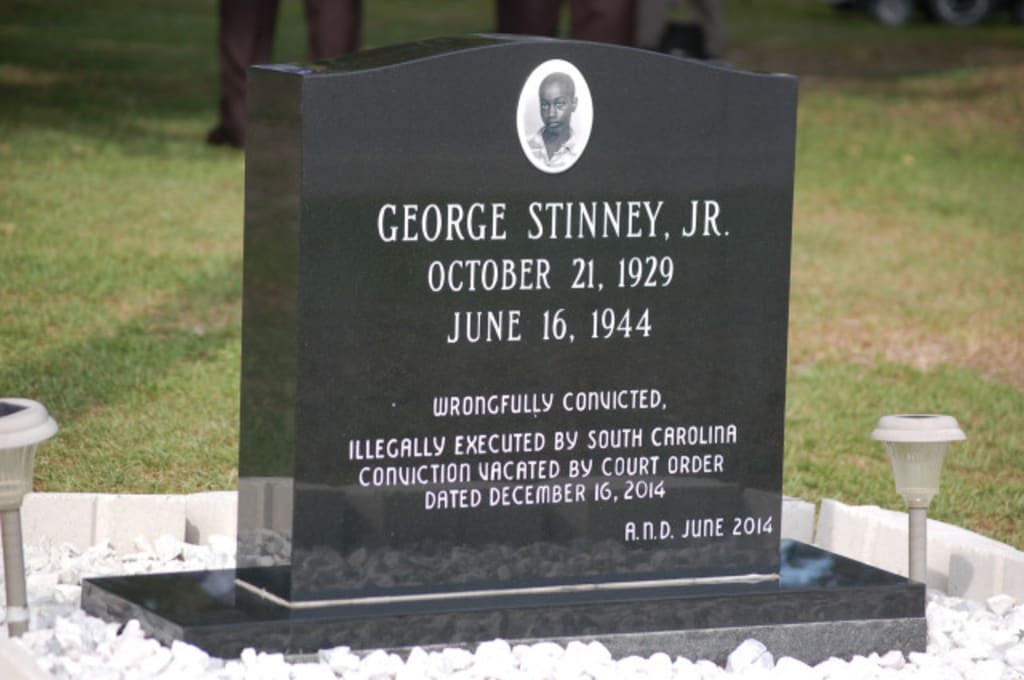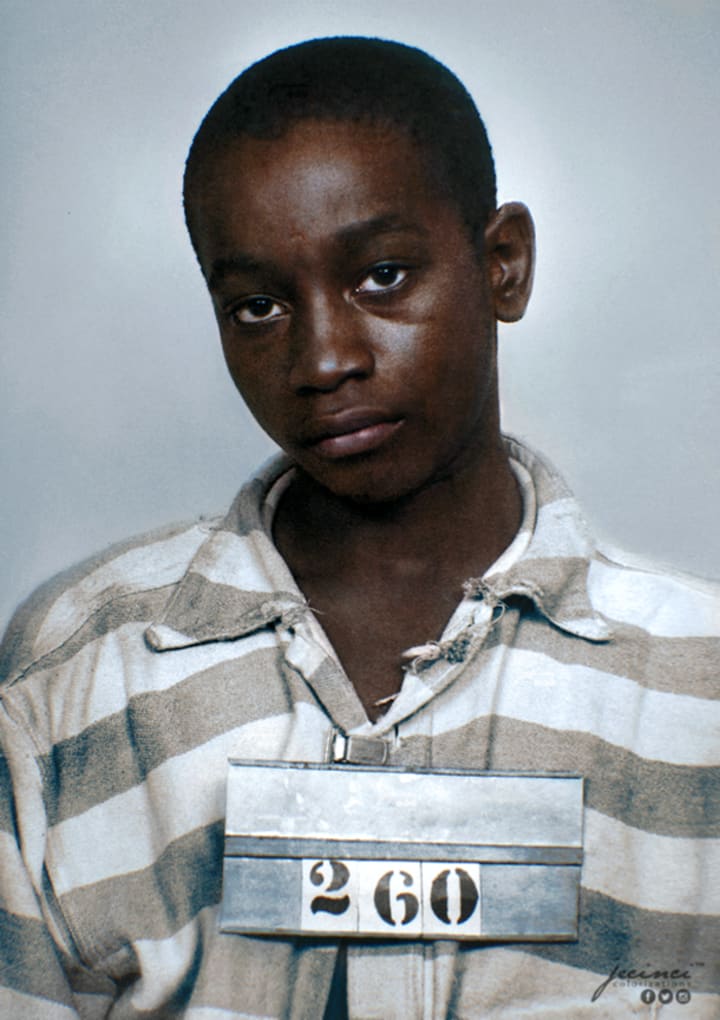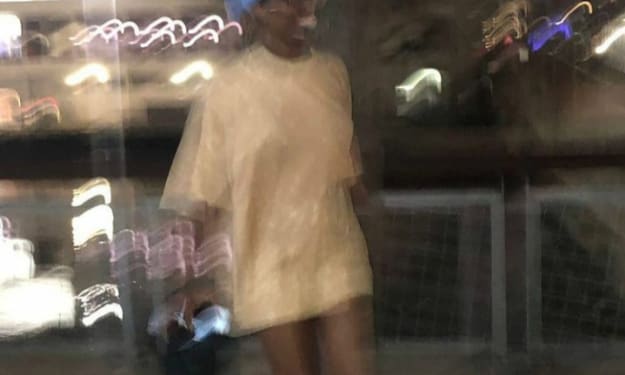George Junius Stinney Jr.
A Child Killed By A State

George Junius Stinney Jr. is the youngest person in United States history to be executed, at the age of 14. I cannot remember what I was reading when I saw his picture for the first time. I know that the fact that the state of South Carolina electrocuted a 14-year-old child made the food I had eaten try to leave my body. There are certain certainties life drills into your mindset and America’s “justice system” (like many other fixtures in America) not classifying Black Americans as qualifiers for fair treatment is one of them. This was perhaps more blatant in 1944 but do not be brainwashed into believing that we have overturned that system. A system set in steel, encased in metal, grander than the Great Wall of China, and sturdier than the wall that tumbled in Berlin.
One assumingly insignificant fleeting moment changed the Stinney family’s life forever. George and his sister Amie, 8, were tending to their family cow when Betty June Binnicker,11, and her friend Mary Emma Thames, 7, stopped riding their bikes to ask the siblings if they knew where they could find maypops. The brother and sister said no, and the two friends continued in their search for the passion fruit like wildflowers. A lumber truck is said to have shortly passed by after the girls continued. George and Amie were the last people documented to have seen Betty and Mary alive. The two young girls never returned home and after several hours numerous search parties scoured the small town of Alcolu hoping to bring Betty and Mary back to their parents. The next day Betty and Mary were found bludgeoned to death in a ditch. That was the first crime committed against those 2 innocent young girls, the second was there being no attempt to thoroughly investigate their gruesome murders.
Crimes/ Injustices Against George Junius Stinney Jr and his family
• George and his older brother Johnnie were taken out of their home and taken to the precinct without their parents’ present.
• George was held and interrogated again without his parents or an attorney in the room. He was their only suspect because it had been stated in the community that he saw the girls’ the day they went missing. George and his father participated in the search for the girls that evening and he was said to have told his father he and Amie had seen the two girls earlier.
• The other reason George was the police departments sole suspect was because some people said he was “the meanest kid in town.”
• The Deputy Sheriff H.S. Newman stated that George Junius Stinney Jr confessed to murdering Betty Binnicker and Mary Thames after attempting to rape them. Newman also said that he raped Betty postmortem and returned to the bodies 20 minutes later to do so again but her body was too cold. George allegedly took the police to the murder weapon. The dignified officers did not feel the need to write down or record the audio of George’s “confession.” All that exists is the sheriff’s declaration of what he says George Stinney Jr said.
• George Stinney Sr was fired from his job at the lumber mill and the entire family was forced to flee their home in justifiable fear of being lynched. Consider the year, the accusations spewed out as facts, the segregated town and you should be able to see the mobs marching to enact their own street justice.
• George Junius Stinney Jr.’s parents did not even know where their child was because he had been moved since a lynch mob was trying to kill him as well.
• A month after his arrest, George’s trial began with a jury of 12 white men (not exactly a jury of his peers.) He still had not seen his parents. Alone at 14 in a courtroom with nothing but white people, on trial for the murder of two young white girls, the helplessness that must have overpowered him is unimaginable.
• One of the men whose search party found the girls acted as a foreman on the inquest jury. George Burke Sr. was one of the bosses of the lumber mill in town. He was influential in George Junius Stinney Jr.’s conviction. A witness should not be a juror in the case at all to say the least.
• The jury “deliberated” for 10 minutes and decided that George was guilty with no recommendation of mercy. His lawyer brought forward no witnesses, though he had an alibi. The Judge sentenced George Junius Stinney Jr to death by electrocution. There was no appeal made on George Junius Stinney Jr.’s behalf.
• People pleaded for the same leniency afforded to Ernest Feltwell Jr, a white 16-year-old son of a marine, who plead guilty to the attempted rape and murder of an 8-year-old girl. He was sentenced to 20 years in prison while George was condemned to the electric chair just 83 days after his arrest.
George Junius Stinney Jr. was 5 foot 1 and weighed about 95 pounds. It is unreasonable to think that he could have beaten Betty and Mary, then drug their bodies from the murder scene to the ditch they were found in. The lack of blood where they were found led people to deduct that their bodies had been moved. George did not even have blood on him nor was any blood found on his clothes.
George Junius Stinney Jr. too small to be securely strapped into the electric chair, was killed by the state of South Carolina on June 16, 1944. The mask was not made for a child, so it fell off revealing the tears streaming down his face and the fluid exiting his mouth, after the first shock of the chair. The people witnessing George Junius Stinney Jr.’s murder by the decree of his government had to look him in the eye for the next and final two shocks.
All along it had been rumored that George Burke Jr., a prominent white man, was the real murderer of those 2 little girls. Betty and Mary are said to have stopped at the Burke’ home to ask Mrs. Burke to pick maypops with them. George Burke Jr. pulled up in a lumber truck and allegedly gave the girls a ride to find the wildflowers. The two girls’ bodies were found on George Burke Sr.’s property. Some women who have been asked about George Burke Jr. spoke of being afraid of him. Burke Jr. died three years after the George Junius Stinney Jr. was killed by the state of S.C. Some say on his death bed, he admitted his guilt. Decades later, George Burke Jr.’s son said that his grandmother told him his father did give Betty and Mary a ride, which wouldn’t have made George and Amie the last to see the girls alive. Soon after he made that statement, he denied ever saying it. George Burke Jr.’s last words were not recorded and there is little-to-no concrete evidence to prosecute him. There was of course no attempt in 1944 to look into any other suspects.
In 2014 with the behemoth amount of reasonable doubt, perseverance on behalf of his family, and diligence from lawyers and activists George Junius Stinney Jr.’s murder conviction was vacated. 70 years after the state of South Carolina killed George Junius Stinney Jr., his family was granted a writ of coram nobis (an acknowledgement that mistakes were made).
George Junius Stinney Jr.’s last words to his cellmate were “Johnny, I didn’t, didn’t do it. Why would they kill me for something I didn’t do?”
Remember his name. Remember his face. Remember that those girls’ murders were not investigated because it was palatable for people to accept a little black boy murdering two white girls rather than a white man being the monster that took Betty and Mary’ lives. Remember that it took 70 years for his name to be cleared. Remember that those facts are just as integral a part of America as the flag having 50 stars and 13 stripes.

About the Creator
Reader insights
Outstanding
Excellent work. Looking forward to reading more!
Top insight
Expert insights and opinions
Arguments were carefully researched and presented






Comments
There are no comments for this story
Be the first to respond and start the conversation.